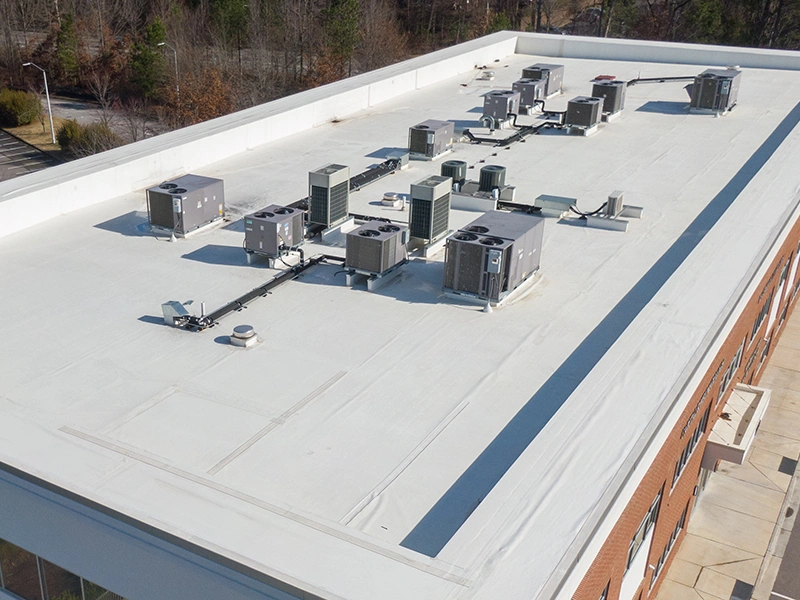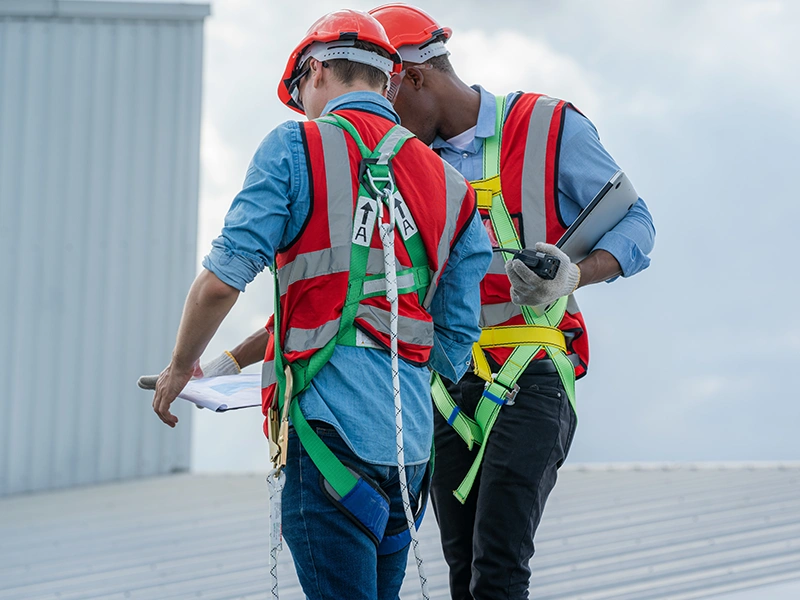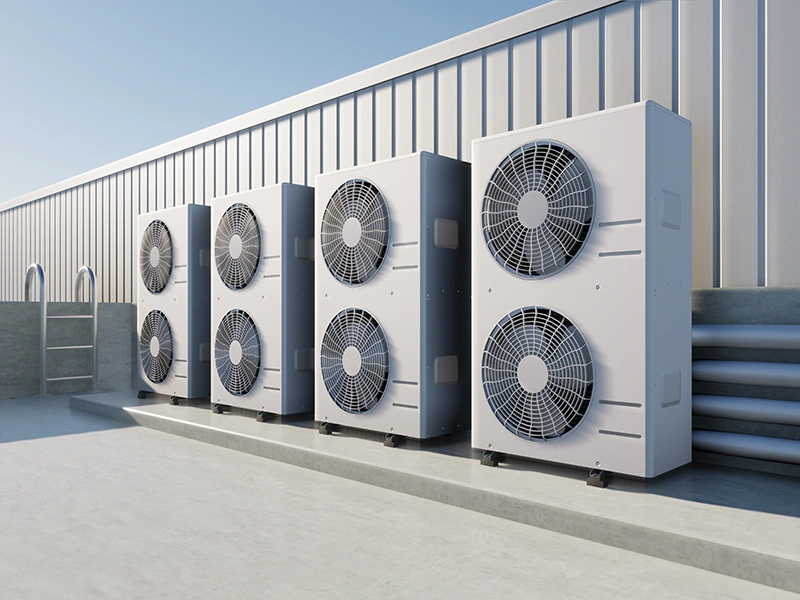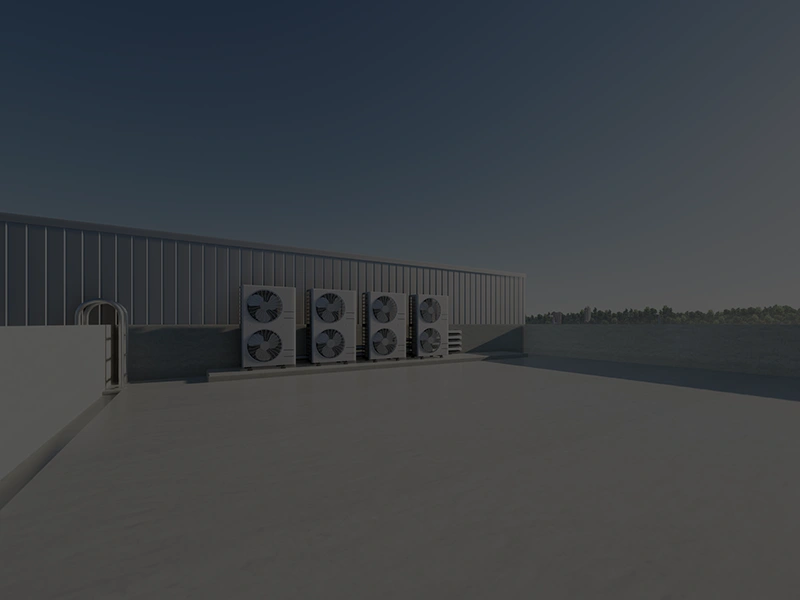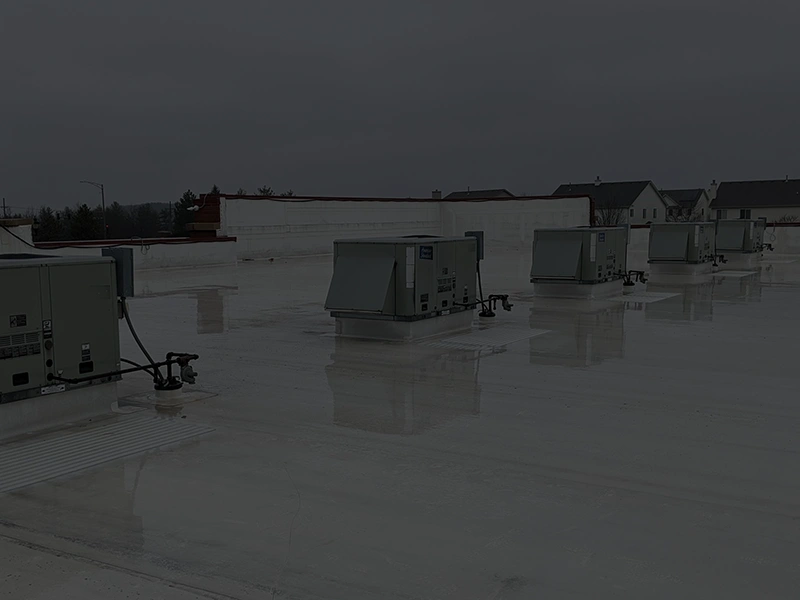How is Commercial Roof Restoration Different Than Commercial Roof Replacement?
When it comes to maintaining a commercial building, the roof is one of the most critical components to consider. It protects the interior from the elements, helps in energy conservation, and contributes to the overall structural integrity of the building. Over time, every roof will face wear and tear due to exposure to harsh weather conditions, which raises the need for either roof restoration or replacement. While both services aim to address roof issues, they differ significantly in process, cost, and impact on the environment. Understanding these differences is crucial for business owners to make informed decisions that best suit their needs and budget.
To Restore Or Replace Your Commercial Roof? That Is The Question.
Roof Restoration
Roof Restoration typically involves the process of cleaning, repairing, and recoating a roof to extend its lifespan. This service is viable for roofs that are fundamentally in good condition but show signs of minor wear and tear or superficial damage. Restoration can often add 10 to 15 years to the life of a roof and is a proactive measure to prevent minor issues from escalating into severe problems.
Roof Replacement
Roof Replacement, on the other hand, involves the complete removal of the existing roof down to the deck, followed by the installation of a new roofing system. This process is necessary when a roof is beyond repair, whether due to extensive damage, severe structural issues, or simply reaching the end of its service life. Replacement provides a brand-new roof but comes with higher costs, longer project times, and more significant environmental impact due to the disposal of the old roofing materials.
Cost Implications
One of the most compelling differences between roof restoration and replacement is the cost. Restoration is significantly less expensive than replacement for several reasons. First, it requires fewer materials and less labor, which directly translates to lower overall costs. Additionally, restoration can often be completed more quickly than a full replacement, reducing labor costs and minimizing the time the business operations are affected.
Environmental Impact
The environmental impact is another crucial factor distinguishing roof restoration from replacement. Restoration is a more eco-friendly option because it makes use of the existing roofing material, thus minimizing waste. On the contrary, roof replacement generates a considerable amount of waste as the old materials need to be disposed of, usually in a landfill. Furthermore, since restoration uses fewer new materials, it also reduces the carbon footprint associated with the manufacturing and transportation of these materials.
Business Disruption
Business operations can also be affected differently by the two processes. Roof restoration is generally less disruptive than replacement. It can often be carried out without having to close the business or only requires a brief closure. Roof replacement is more intrusive and time-consuming, potentially necessitating temporary closure or relocation of business operations, which can lead to lost revenue.
Longevity and Value
While restoration can significantly extend the life of an existing roof, replacement provides a new roofing system with a longer lifespan. A new roof can last anywhere from 20 to 50 years or more, depending on the materials used, compared to the additional 10 to 15 years typically gained from restoration. For some businesses, the long-term value of a new roof, with its longer lifespan and warranty, may outweigh the initial higher investment.
Deciding Between Commercial Roof Restoration Or Replacement
The decision between roof restoration and replacement should be based on a thorough inspection of the current roof’s condition, considering factors such as age, extent of damage, and future plans for the building. Consulting with a professional roofing contractor can provide insights into the most cost-effective and beneficial option.
In cases where the roof is fundamentally sound with only minor issues, restoration can be an excellent way to save money, reduce environmental impact, and extend the roof’s service life. However, if the roof is extensively damaged or nearing the end of its lifespan, replacement might be the more prudent choice to ensure the building’s safety and structural integrity.
Commercial roof restoration and replacement are both vital services that address different needs of a building’s roof. Understanding the distinctions between them is essential for making informed decisions that align with your business goals, budget, and sustainability values. Whether choosing restoration to extend the life of a current roof or opting for replacement to invest in the building’s future, it’s important to work with reputable roofing professionals who can guide you through the process and ensure the health of your commercial property for years to come.
Ready to fortify your commercial roof and protect your business investment? Contact us today for a FREE consultation and quote. Your reliable roof is just a message away!
#CommercialRoofing #RoofCoatings #EnergyEfficiency #ProtectYourInvestment #BusinessSolutions

